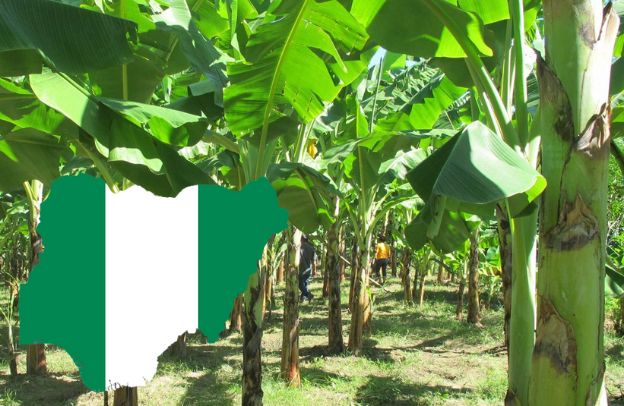Cultivating Resilience: Innovations in Disaster-Proofing Crops

Late blight, an age-old nemesis of potato crops, has long haunted agricultural communities, its devastating impact echoing through history. From the Irish potato famine of the 19th century to its persistent threat in contemporary agriculture, late blight remains a formidable challenge. But are there no solutions?
Want to learn more about storytelling? Start by downloading the first chapter of The Storytelling Mastery.
Recent shifts in climate have exacerbated this threat, facilitating its spread to new regions, including the higher reaches of the Peruvian Andes. Here, at the nexus of tradition and innovation, scientists at the International Potato Center (CIP) are pioneering efforts to combat this menace.
What is The International Potato Center?
Established in 1971, the Global Spud Hub is a research and development, honing its focus on the sweet potato, its sweet counterpart, and the diverse Andean tubers.
Their mission? Pioneering inventive, science-driven solutions to bolster access to wholesome, economical sustenance, while nurturing inclusive, eco-friendly business ventures and employment opportunities.
Nestled in Lima, Peru, The International Potato Center sprawls its research tentacles across 20 nations in Africa, Asia, and Latin America, fortifying the resilience of root and tuber agriculture in the face of climate challenges.
Drawing inspiration from nature’s resilience, researchers at CIP embarked on a journey to expand on natural defenses against late blight. Their quest led them to explore the genetic reservoirs of undomesticated plants, known as crop wild relatives, distant kin to the cultivated crops we rely on for sustenance.
See also Managing Water Resources in Cassava Farming: Tips for Small-Scale Farmers in Nigeria
Among these wild relatives, they have discovered a treasure of genetic traits conferring resistance to late blight.
“It’s about reducing the water and fertilizer per acre,” Ponsi Trivisvavet, Inari’s chief executive, says in a BBC article: How crops are being disaster-proofed.
Through careful crossbreeding and rigorous field testing, they cultivated a new potato variety, CIP-Matilde, heralded as a breakthrough in blight resistance.
Benjamin Kilian, a senior scientist at the Crop Trust, a key partner in this endeavor, underscores the significance of this achievement: “CIP-Matilde is a testament to the power of collaboration between science and local wisdom, offering a sustainable solution to a persistent agricultural challenge.”
However, resilience in agriculture extends beyond disease resistance; it encompasses a spectrum of environmental stressors. Recognizing this, the Crop Trust’s Bold project takes a holistic approach to resilience, focusing on traits such as drought tolerance.
Through participatory processes that engage farmers at every step, Bold aims to ensure that crop varieties not only withstand diverse environmental challenges but also meet the diverse needs and preferences of farming communities.
Brad Ringeisen, executive director of the Innovative Genomics Institute (IGI), emphasizes the importance of community involvement in crop development: “By listening to farmers and integrating their feedback, we can tailor our innovations to address real-world challenges.”
It’s important to note that in genetic engineering, precision is paramount whether you are talking of potato, cassava which is another important crop in tropical Africa, and more.
The IGI’s pioneering work in gene editing represents a paradigm shift in crop protection. By precisely manipulating plant genomes, researchers can confer resistance to diseases and enhance tolerance to environmental stressors like drought.
Field trials of gene-edited rice varieties in Colombia demonstrate the promise of this technology in mitigating the impact of climate change on agriculture. However, there are concerns about the implications of genetic modification, particularly in regions with stringent regulations governing genetically modified organisms (GMOs).
In contrast to traditional breeding methods, which are time-consuming and labor-intensive, gene editing offers a more expedient path to resilience. Inari, a seed-design company based in Massachusetts, is at the forefront of this technological revolution.
Leveraging multiplex gene editing and AI-driven predictive design, Inari aims to boost crop yields exponentially, offering a lifeline to farmers grappling with the challenges of climate change.
Ponsi Trivisvavet, CEO of Inari, underscores the urgency of their mission: “In a rapidly changing climate, the ability to produce more with less is not just desirable; it’s imperative.”
However, the promise of innovation must be tempered with considerations of equity and accessibility. The affordability of hybrid and gene-edited seeds remains a pressing concern, particularly for smallholder farmers in developing countries.
Advocates for seed sovereignty stress the importance of ensuring that farmers retain control over their agricultural resources, safeguarding their livelihoods in the face of technological advancements.
See also Companion Planting for Pest Control in Cassava Farming in Nigeria
As we confront the existential threat of climate change, the imperative to diversify our agricultural landscapes can easily become increasingly clear. Neglected crops, such as grass pea and Azolla, offer untapped potential for resilience, their genetic resilience honed through millennia of adaptation to diverse environments.
Consider also that embracing the rich genetic diversity within crop families is not just a matter of agricultural sustainability; it’s a question of survival.
Through collaboration, innovation, and deep respect for the wisdom of traditional farming communities, we can cultivate a future where our crops are not just resilient to disasters but thrive in harmony with the ever-changing rhythms of the natural world.
As Benjamin Kilian aptly puts it, “In diversity lies our strength, and in resilience, our hope for the future.”
Want to learn more about storytelling? Start by downloading the first chapter of The Storytelling Mastery.





